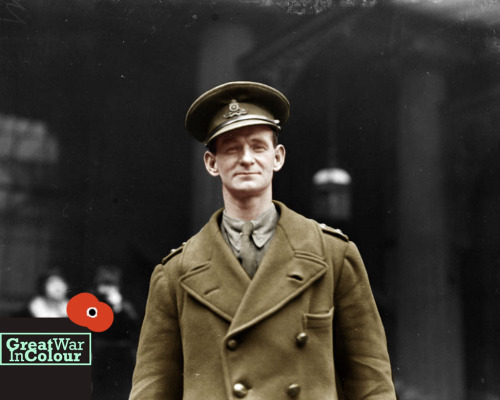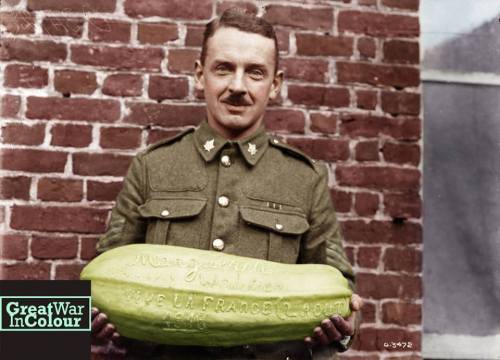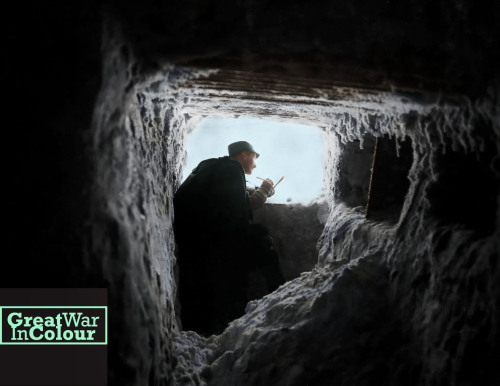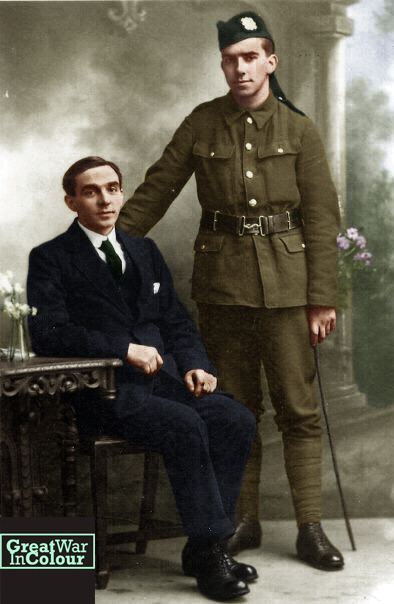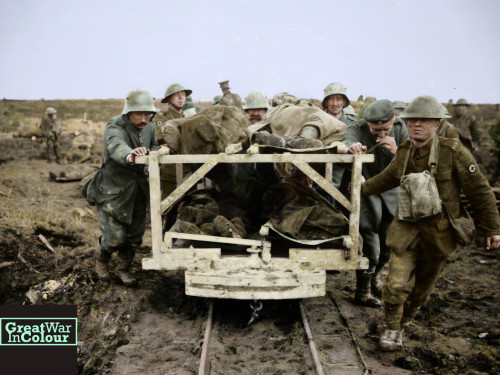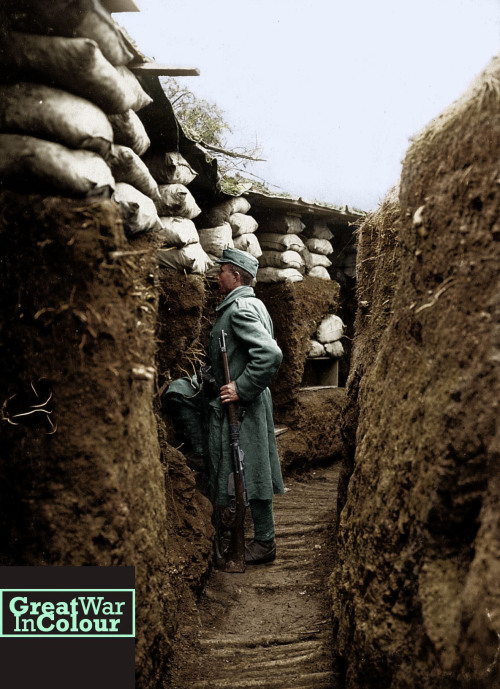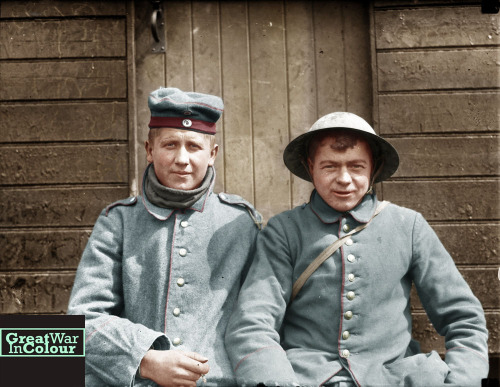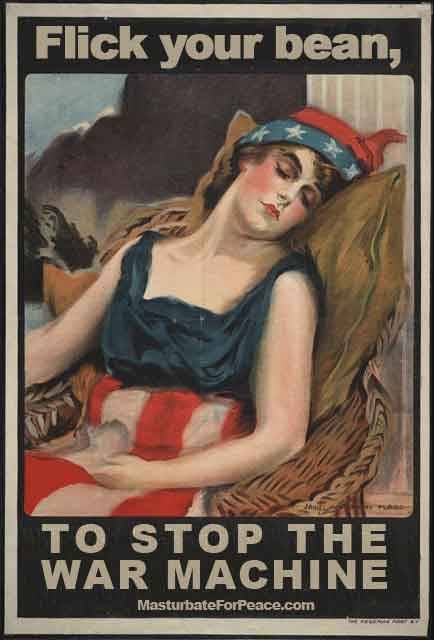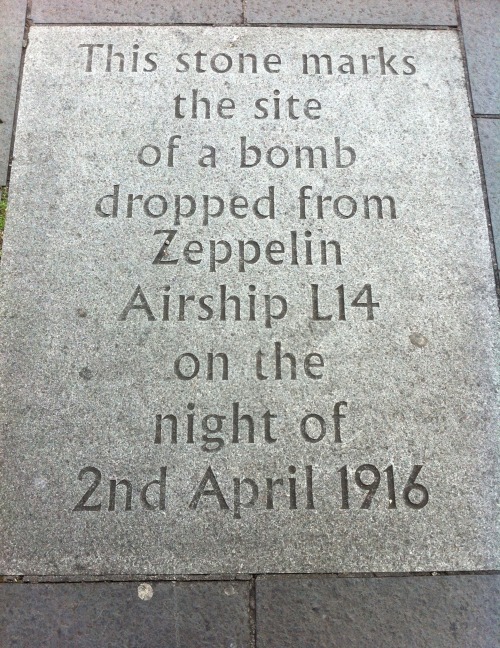#first world war
1/11
Portrait of Lieutenant R.C. Lister, Canadian Field Artillery and recipient of the Military Cross. Date unknown.
Original image source: Canadian Library and Archives
GWICwill be posting one portrait each day until November 11th.
Post link
A young girl leads Canadian soldiers down Rue de Rempart in Valenciennes, France in November, 1918.
Original image source: Canadian Library and Archives
Post link
“Marguerite Walitier / Vive La France 12 Aout 1918″
A Canadian soldier from the 1st Machine Gun Battalion shows off a large zucchini which was presented to the Prince of Wales. Photo taken in Valenciennes, France in October, 1918.
Original Image Source: Canadian Library and Archives
Post link
Austrian war painter Lieutenant Kainradl at work in a snow tunnel on the Italian Front, circa 1916.
Original image source: Austrian National Library
Post link
This WWI portrait comes courtesy of @wherethepoppiesblow:
“It’s my grand uncle Michael L Ryan (right) who served with the 16th bn highland light infantry he was killed in action on the first day of the Somme attacking toward just south of Thiepval. He is with his brother William Patrick Ryan (left) my great grandfather who served in the merchant navy during both wars. He was also killed in action in WW2.”
Thank you for sharing your story and family history, @wherethepoppiesblow.
Post link
A member of the Canadian Cyclist Corp smiles for the camera, September 1917.
Original image source: Canadian Library and Archives
Post link
German soldiers assist members of the Canadian Medical Corp in transporting Canadians injured in the battle of Vimy Ridge. April 1917.
Original image source: Canadian Library and Archives
Post link
An Austrian soldier stands in a trench built along the Isonzo Valley, on the Italian front in 1916.
Original image source: Austrian National Library
Post link
Two German prisoners of war captured by Canadians during the Battle of Vimy Ridge.
Original image source: Library and Archives Canada
Post link
Canadian soldiers in a reserve trench, during the battle of the Somme, watch shrapnel bursts above them.
Original image source: Library and Archives Canada
Post link
Meet the bird that captured the heart of this Canadian soldier… and maybe some of his things.
The four photographs below show a jackdaw who was found sometime during the Battle of the Somme. It became the mascot of this Canadian Army Service Corp despite the fact that he was a bit of thief and “continually stealing” from them. The pictures below were taken in March, 1917.
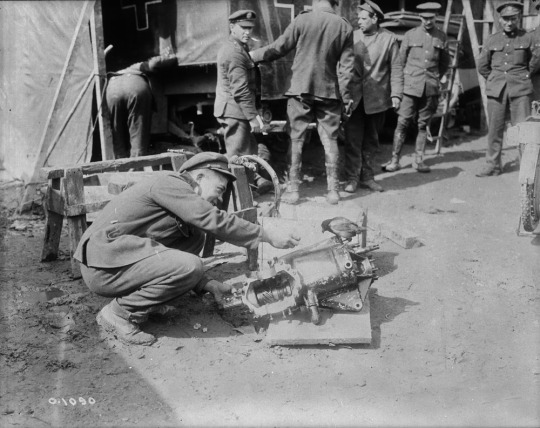



Photographs:1,2,3,4 from the Canadian Library and Archives.
Looking for more photographs of animals at war? Check out the Atlantic’sphoto series on the very topic.
Taking a break from colourizing, GWIC Takes Five is a feature which brings to you primary source material from the First World War. Whether it be postcards, posters, or letters. To see more, track the tag GWIC Takes Five.

A massive crowd rallies outside the former Royal Palace and the Kaiser Wilhelm Monument, expressing their support for the Republic. Both structures were demolished by the East German government after World War II, though a reconstruction of the palace was completed in 2020.
August 31 1921, Biberach–Matthias Erzberger, leading advocate of peace since July 1917 and signer of the Armistice, quickly became a bête noire to the German right, who viewed him as a traitor. By 1921, he had retreated to the backbenches of the Reichstag. Organisation Consul, a violently anti-Semitic and ultranationalist terror group formed after the dissolution of the Ehrhardtbrigade (the main force behind last year’s Kapp Putsch), assassinated Erzberger on August 26. The two assassins escaped Germany and would not stand trial until after World War II.
His funeral, on August 31, became a political rally for his Zentrumparty; the keynote speaker was his long-time ally, Chancellor Joseph Wirth. In Berlin, over 100,000 workers, mostly members of the SDP and other left-wing parties, demonstrated in support of the fragile German Republic.
“Battle of Bailleul. Men of the Middlesex Regiment holding a street barricade in Bailleul, 15 April 1918, just before the fall of the town.“ Taken by photographer John Warwick Brooke.
Source: Imperial War Museum.
Post link
“Battle of Pozieres Ridge. Troops of the 1st Australian Division (1st ANZAC Corps), some wearing German helmets, photographed between La Boisselle and Pozieres on their return from the taking of Pozieres, 23 July 1916.” By John Warwick Brooke.
Source: Imperial War Museum.
Post link
Military recruitment parody posters by Masturbate For Peace, 2002.
Though it didn’t enter World War I until 1917, the United States produced more posters in support of mobilization and civilian service than any other country. The government established a Department of Pictorial Publicity with 300 artists who were ordered to “draw until it hurts.”
The backlash fifty years later against the Vietnam War included the co-opting by activists of propaganda posters. They substituted anti-military themes, often featuring the slogan, “Make Love, Not War.”

Joan Baez and her sisters Mimi and Pauline posed for a poster challenging the popular notion that refusing to serve was cowardly or unmanly. Their message, that liberated women would have sex with draft dodgers, perhaps recalls the heroine Lysistrata, who organized a chastity movement among Greek wives to force peace negotiations.
Post link
Centenary of Edinburgh Zeppelin Raid
Tonight marks 100 years since two Imperial German Zeppelins attacked Edinburgh and Leith resulting in the deaths of 13 people and injuring 24 others.
On the night of the 2nd April, 1916 four Zeppelins set out from the German Naval Airbase base of Nordholz with the intention to find and destroy targets of interest in and around the Firth of Forth especially the large Naval facilities of Rosyth. One of the Zeppelins, L13 was forced to turn back due to technical difficulties whilst L16 made an abortive journey to Northumberland.
The remaining two Zeppelins: L14 and L22 approached Leith and Edinburgh. L22 caused minor damage to Edinburgh having jettisoned much of its payload in open country near Berwick-Upon-Tweed. L14 however made a sustained attack on both Leith and the Scottish Capital. In Leith nine high-explosive bombs and eleven incendiary bombs were dropped on the town destroying several houses, businesses and warehouses. One man and a baby were killed.
L14 then continued on to Edinburgh were a further 18 high-explosive bombs and six incendiary bombs were dropped killing 11 people and injuring a further 24 others. Four houses, three hotels and a spirits store were severely damaged with Princes Street station and several other building sustaining lighter damage.
The images included are as follows:
i – The memorial pavement stone situated in the centre of Grassmarket in front of the White Hart Inn which was devastated in the 2nd April raids.
ii – The devastated Grassmarket buildings which includes the White Hart Inn.
iii – A close up of the White Hart Inn.
iv – Zeppelin L14
Post link
A painting showing WW1 Imperial German Askari charging forward.
The German empire recruited natives from German East Africa (now Tanzania) to serve in the Askari units.
They were commanded by European officers, and fought a highly effective campaign against the Allied forces in Africa, fighting against a much larger British force until the end of the war in 1918.
Askari units were all given a army pension, but due to the turmoil at the end of the war this was never carried through. In 1964, the Federal German government attempted to make good on these promises and pay the entire back-log of payments to any surviving Askari who could be found.
A payment station was set up for the men to travel to, seeing as postage to the many unnamed villages was unfeasible. 350 men turned up, but many had lost the papers issued to them at the end of the great war. The banker who had brought the money came up with a simple way to sort the real soldiers from fakes. As each man stepped forward he was handed a broom handle and asked (in German) to perform rifle drill movements with it. Not one man failed the test.
Post link
Russian soldiers preparing chlorine cylinders for a gas attack on German positions near Ilukste, 1916
Post link
Nikolai Konstantinovich Marshalk (1895 - 1951)
Since 1918 he was in the Volunteer Army (White army) and participated in the Ice March. He was serving as Second Lieutenant in the Kornilov shock division, and was wounded twice. In 1919 he returned to his homeland Latvia but was enlistend in the North-Western Army the same year. In December 1919 he transfered to the Rifle Division of the 5th Infantry Division. He survived the civil war and emigrated to Germany. In 1938 he was arrested by Gestapo for criticizing Nazi policies and was imprisoned in the Dachau concentration camp. After the end of the war he stayed and lived in Germany for the rest of his life together with his family.
Post link

